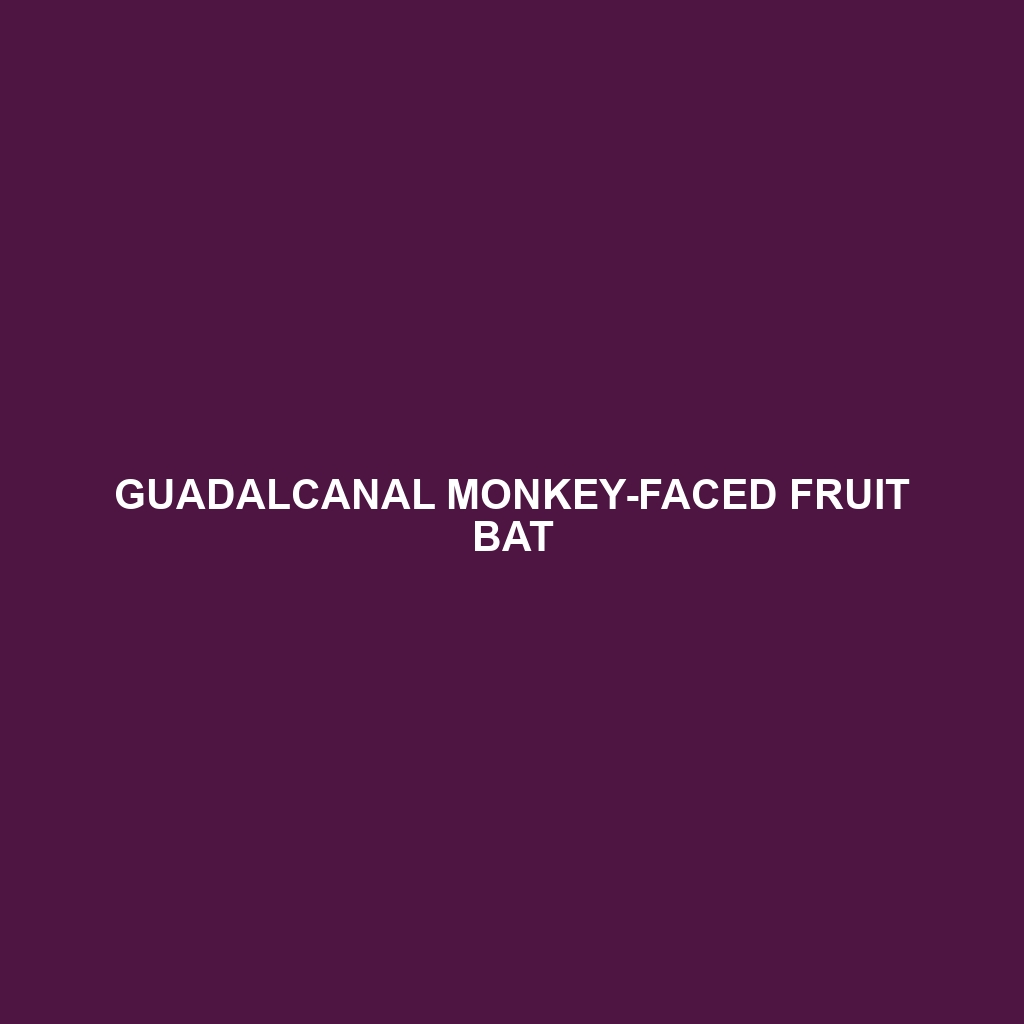Guadalcanal Monkey-faced Fruit Bat
Common Name: Guadalcanal Monkey-faced Fruit Bat
Scientific Name: Hypsignathus monstrosus
Habitat
The Guadalcanal Monkey-faced Fruit Bat is primarily found in the tropical rainforests of Guadalcanal, the largest island in the Solomon Islands. This species thrives in dense, humid environments where they roost in tree cavities or dense foliage. Their habitat is characterized by rich biodiversity, featuring a variety of fruiting trees that provide essential food sources.
Physical Characteristics
Adults of the Guadalcanal Monkey-faced Fruit Bat can measure between 20 to 30 centimeters in body length, with a wingspan that can reach up to 1 meter. They are easily recognized by their large, distinctively shaped faces that resemble those of monkeys, which give them their common name. Their fur is typically a dark brown to reddish color, with lighter underparts. Unique features include protruding lower jaws and noticeable cheek pouches that help in the consumption of fruits.
Behavior
This bat species exhibits nocturnal behavior, becoming active at dusk when they emerge to forage for food. They are known for their remarkable flight agility, enabling them to navigate through the dense forest canopy. Socially, they may be found in small groups, utilizing vocalizations to communicate with each other. During the day, they rest upside down, a typical behavior among many fruit bat species.
Diet
The diet of the Guadalcanal Monkey-faced Fruit Bat primarily consists of a variety of fruits, particularly figs and other soft fruits. They play a critical role in seed dispersal, as they consume large quantities of fruit and subsequently excrete the seeds throughout the forest. Their feeding habits not only sustain the bats but also contribute significantly to the regeneration of the forest ecosystem.
Reproduction
Breeding typically occurs once a year, with the peak season depending on environmental conditions. Female Guadalcanal Monkey-faced Fruit Bats usually give birth to a single offspring after a gestation period of approximately 4 to 5 months. Mothers are known to carry their young while foraging, and juveniles can be seen clinging to their mothers’ bellies for several weeks after birth, ensuring their survival in the early stages of life.
Conservation Status
Currently, the Guadalcanal Monkey-faced Fruit Bat is listed as vulnerable due to habitat loss and hunting pressures. Conservation efforts are critical to protect their remaining habitats and ensure their survival in the wild.
Interesting Facts
One of the most fascinating aspects of the Guadalcanal Monkey-faced Fruit Bat is its unique social structure, where individuals engage in vocal displays and social grooming. This behavior not only strengthens social bonds but also enhances their overall survival in the complex ecosystem of Guadalcanal. Additionally, they are known for their remarkable echolocation abilities, which they utilize to navigate in the dark.
Role in Ecosystem
The Guadalcanal Monkey-faced Fruit Bat plays a vital role in its ecosystem as a seed disperser and pollinator. By consuming fruits and dispersing seeds, they contribute to the regeneration of plant species within their habitat. Their interactions with other species, including trees and understory plants, illustrate their importance in maintaining the ecological balance in the tropical forests of Guadalcanal.

